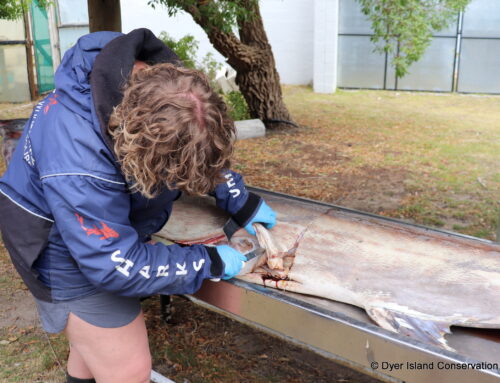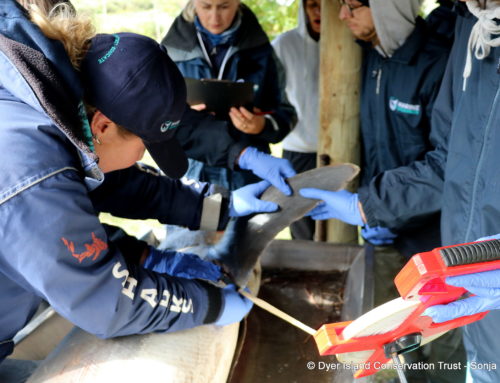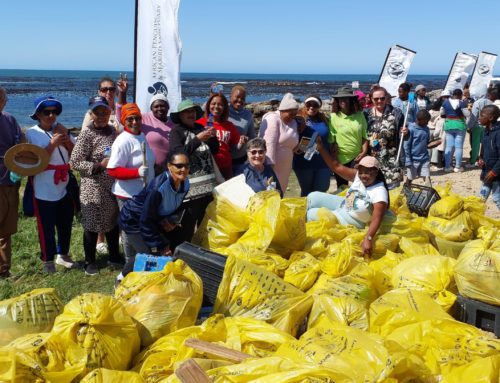FIRST CALF SPOTTED IN WALKER BAY
July 23, 2010 by dyertrust


Adin was a Ph.D. candidate, registered with the

Lawrence Green is his book At Daybreak over the Isles published in 1950, said of Ichaboe I had never dreamt of bird life in such profusion until I saw Ichaboe. This is one of the unknown wonders of the world.
Ichaboe is a Hottentot name and is believed to mean the lonely place.
A history of guano scraping has left the island floor exposed. The guano was once estimated to be 22m deep back in the 1840s. Greens book goes on to tell some interesting tales of the fight over the valuable guano for agricultural fertilizer.
The Island falls under the management of the Namibian Ministry of Fisheries and Marine Resources. Like Dyer Island, Ichaboe is also classified as an Important Bird Area (IBA) by BirdLife. It remains one of the most densely packed breeding areas for seabirds in the area. It is estimated that the African Penguin population here is 615 breeding pairs (2009 count by researcher Jessica Kemper).
The island is devoid of vegetation and low lying thus prone to storm damage. Due to the need for shelter for the African Penguin form weather conditions and predators, Wilfred Chivell, founder of the Trust, visited Ichaboe Island (Namibia) this June. Twenty nests have been given to the Island headman, Tony Delport, to assist with the fledgling success of the African Penguin, recently ,moved on to the endangered list.

A call from Rob Lobb, an Honorary Fishing Inspector, on Thursday the 15th of June found marine biologist Katja Vinding Petersen (MSc) of the Dyer Island Conservation Trust and Albert Scholtz from Dyer Island Cruises, face to face with a leopard seal. Leopard seals (Hydrurga leptonyx) are found in the Antarctic and there have been so few sightings on the South African coastline that there was reason to be excited. The site was Die Dam, approx. 40kms from Gansbaai in the Western Cape.
Leopard seals are known to be fast and agile -even on land and can be highly aggressive towards humans.
The condition of the leopard seal was very poor and it appeared lethargic. It was resting in the sun and did not move much. There were no wounds and no signs of entanglement in any fishing gear. Its teeth and gums looked healthy. The animal was approximately two metres in length, indicating that it is a juvenile, but because we did not wish to disturb the animal, it was not possible to determine the sex, says Katja.
The seal was hauled out against a sand dune at the high water mark and disappeared overnight and although Meredith Thornton of the Mammal Research Institute (University of Pretoria) and government department Oceans & Coasts were notified, return visits to the area to locate the seal were unsuccessful.Should it be sightedplease contact 0829075607.
Pictures by: Katja Vinding Petersen




